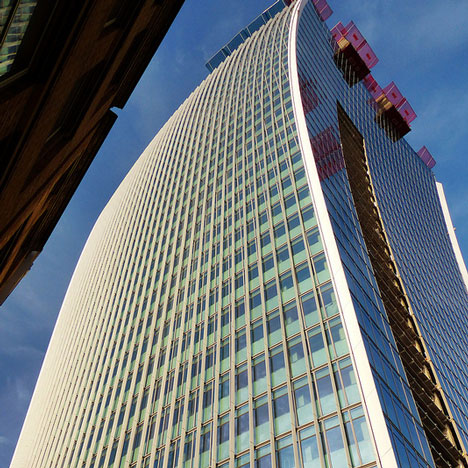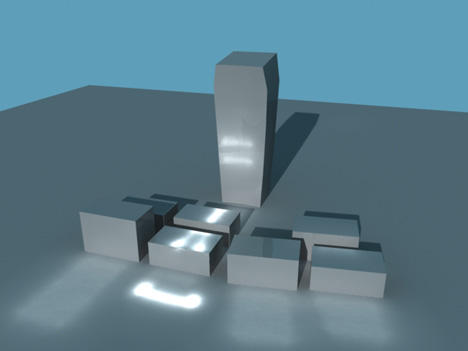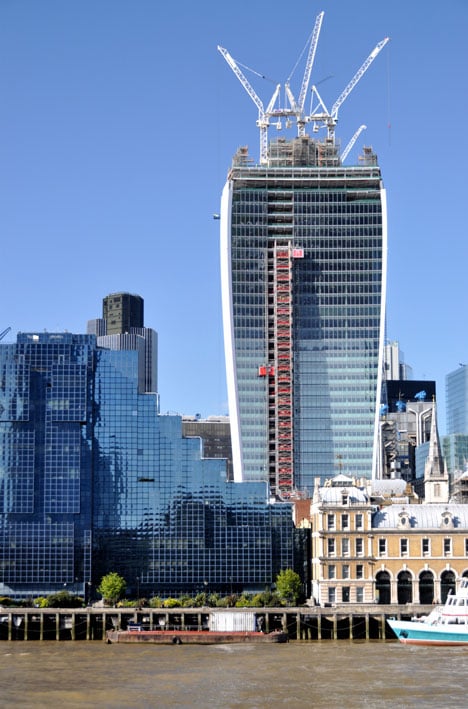
CGI artist predicted "Walkie Scorchie" effect a year ago
News: the "death-ray" effect created by sunlight reflected off the glazed facade of Rafael Viñoly's Walkie Talkie skyscraper in London were predicted over a year ago by a professional CGI artist, it emerged today as developers rush to install protective screens.
The artist, who goes by the forum username Bobdobbs, anticipated that the curvaceous facade of the 37-storey tower at 20 Fenchurch Street could at certain times of the year create light reflections up to 600% brighter that its surroundings buildings, using a simple 3D mock-up of the volume.
"A clear hot late September/October day may throw up some very interesting lighting effects," he wrote on a thread at website SkyscraperCity. "I'm fairly confident that the difference, from measurement, is about 600% brighter! I know where I wouldn't want to stand!"

Comparing the project to nearby skyscraper The Shard, which is reported to have dazzled train drivers, Bobdobbs added: "The Shard's death ray will be nothing compared to this."
The news emerges as developers Land Securities and Canary Wharf take emergency action to prevent more damage being caused by intense glare from the nicknamed "Walkie Scorchie", which is said to have melted vehicles, cracked pavement tiles and even started a small fire.
"Following approval from the City of London, we will be erecting a temporary scaffold screen at street level on Eastcheap within the next 24 hours," said a spokesperson. "This solution should minimise the impact on the local area over the next two to three weeks, after which time the phenomenon is expected to have disappeared."
They added: "We are also continuing to evaluate longer-term solutions to ensure this issue does not recur in future."

Philip Oldfield, a tall buildings expert from the University of Nottingham, has suggested that amendments to Rafael Viñoly's initial concept could be to blame. "It seems the original design included small horizontal balconies on the south facade rather than the continuous glass facade as built now," he told The Independent. "This would have surely mitigated any significant glare like we are seeing at the moment."
Other preventative measures that could be taken include adding small fins to the exterior or applying a special coating that reduces the impact of the reflections.
This isn't the first time that a building by the Uruguayan architect has prompted complaints about glare. In 2010, guests at the Vdara Hotel in Las Vegas complained of scorched hair and melted drinks glasses. The hotel has since used anti-reflective film, oversized plants and rows of umbrellas to fix the problem.
The unfinished skyscraper is not set to open until next year and will feature an elevated garden and observation deck that will be open to the public.
See more architecture by Rafael Viñoly »
See more skyscraper news »
Photograph of the Walkie Talkie is courtesy of Shutterstock.